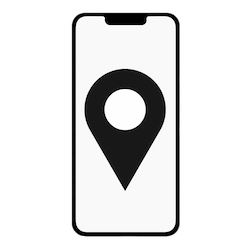What to Do in a Car Accident?
An Attorney’s Comprehensive Guide for Clients in the USA
In the aftermath of a car accident, individuals often find themselves in shock and confusion. As an attorney, providing your clients with transparent, actionable guidance can significantly impact their ability to navigate the situation effectively and protect their rights. Here’s a comprehensive guide for attorneys to assist clients following a car accident.
- Prioritize Safety Above All Move to Safety:
- If possible and safe, advise clients to move their vehicle out of the traffic flow. If the car is immobile, they should remain inside the vehicle with the hazard lights on until help arrives.
- Check for Injuries:
- Instruct clients to check on all vehicle occupants before addressing property damage. If there are any injuries, call 911 immediately.
Notify Law Enforcement
Even in minor accidents, it’s beneficial to have a police report. It can serve as valuable evidence for insurance claims and potential legal actions. Your clients should always request a copy of this report.
Exchange Essential Information
Direct your clients to exchange the following with the other involved parties:
- Full name and contact information
- Insurance company details and policy number
- Driver’s license and license plate number
- Type, color, and model of the involved vehicles
- Accident location
Importantly, advise clients against discussing fault or making definitive statements at the scene.

Gather Evidence
- Photograph the Scene:
- Using a smartphone or camera, clients should capture clear images of vehicle damage, road conditions, traffic signals, license plates, and other pertinent factors.
- Seek Witnesses:
- Gathering their contact information can prove invaluable later if there are bystanders or witnesses. Witnesses can offer a neutral perspective on how the accident unfolded.
Document the Incident
Encourage clients to write down their recollection of the event as soon as possible, capturing details like:
- The time and date
- Weather and lighting conditions
- The sequence of events leading up to the accident
- Indications or observations about the other driver’s state (e.g., signs of intoxication, distracted driving)
Medical Assessment
Clients should get a medical evaluation following the accident, even if they feel uninjured. Some injuries may not manifest immediately, and this step identifies any potential harm early. Moreover, medical records can be pivotal if legal action arises later.
Report the Accident to the Insurance Company
While it’s crucial to promptly report the incident to the insurance provider, clients should be mindful of their statements. They should provide facts without admitting fault or speculation. Having an attorney during this step can be beneficial.
Retain All Relevant Documentation
Ensure your clients create a dedicated file for the accident, including:
- The police report
- Medical bills and records
- Repair estimates and receipts
- Correspondence with insurance adjusters or other involved parties
Consider Legal Representation
If injuries or significant property damage are involved, it’s often wise for clients to seek legal counsel. An experienced attorney can:
- Guide them through the intricate legal landscape
- Advocate for fair compensation
- Handle negotiations with insurance adjusters
- Represent their interests in court if necessary
Be Mindful of Deadlines
Each state in the U.S. has its statute of limitations governing how long victims must file a lawsuit post-accident. Inform your clients of these deadlines to ensure they retain the ability to pursue legal remedies.
Conclusion
The moments following a car accident can be overwhelming, and the subsequent days and weeks are fraught with complexities. As an attorney, guiding your clients through this challenging time not only aids their immediate recovery but also safeguards their future rights and interests. Keeping abreast of the evolving legal landscape and best practices can ensure you offer the most effective representation and counsel.
